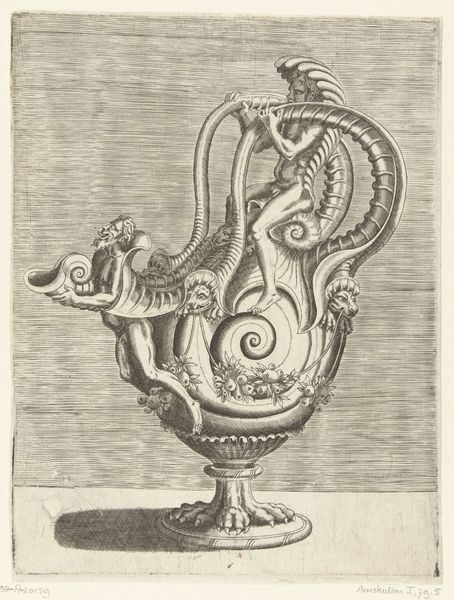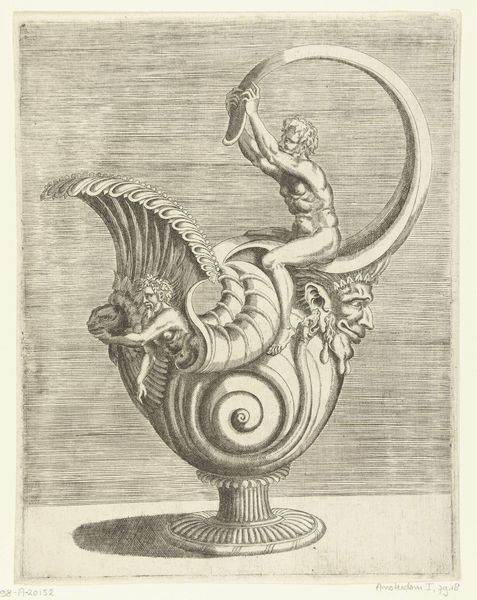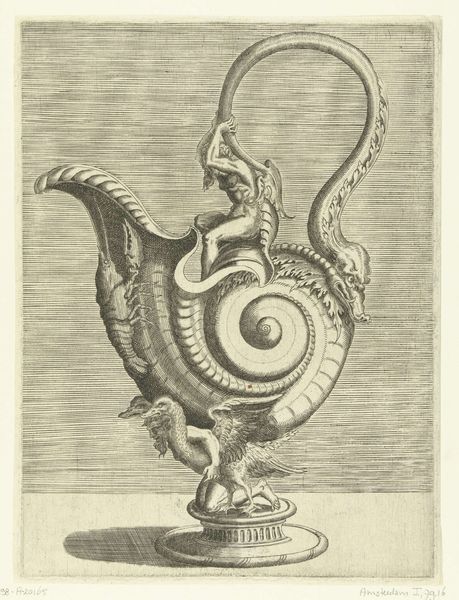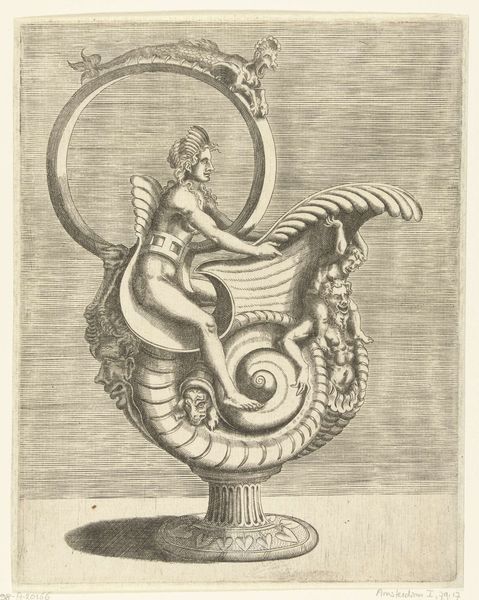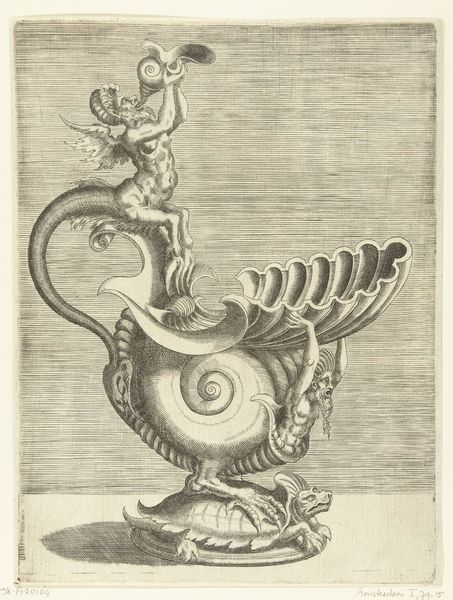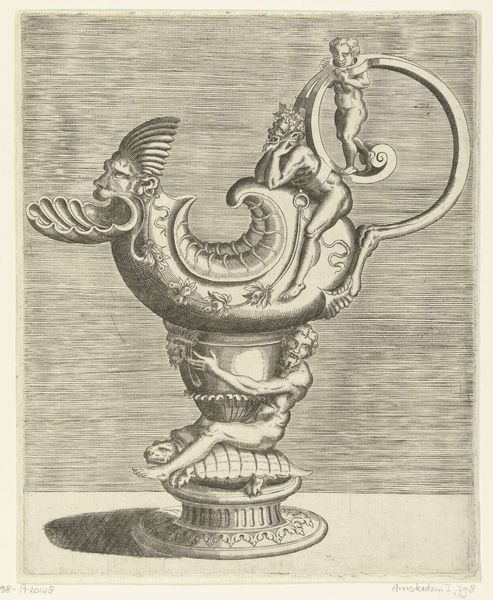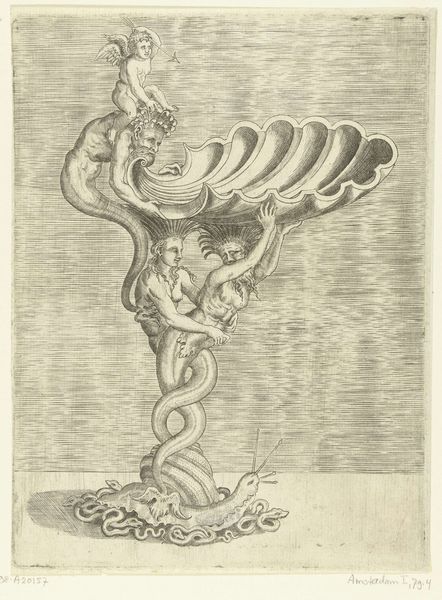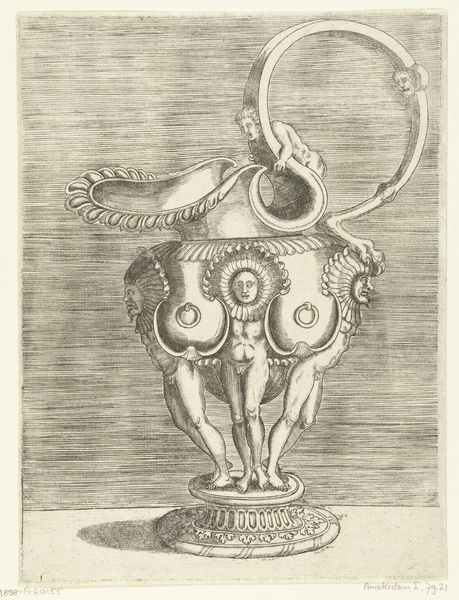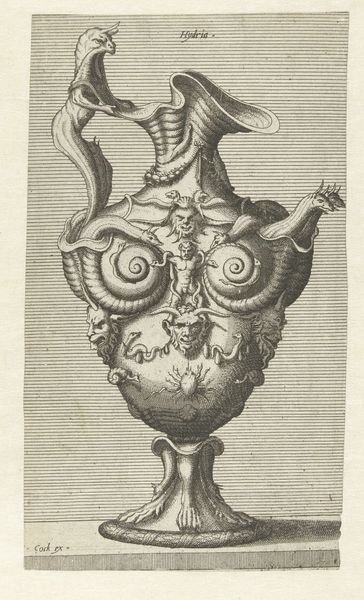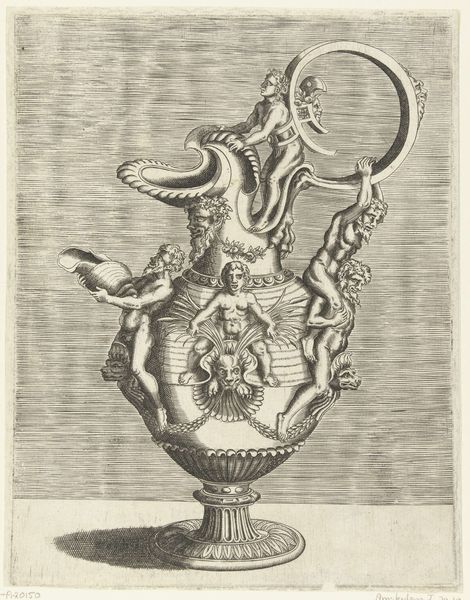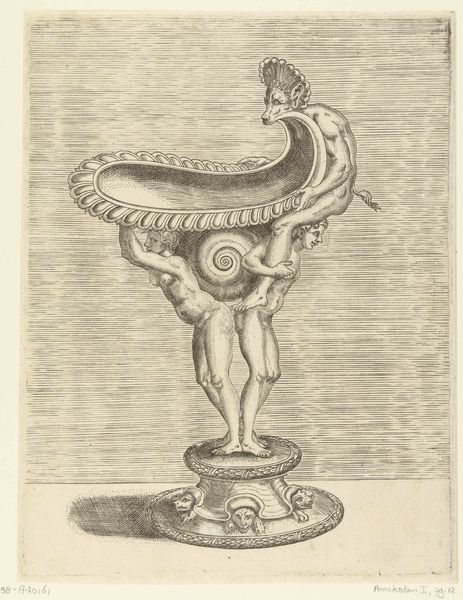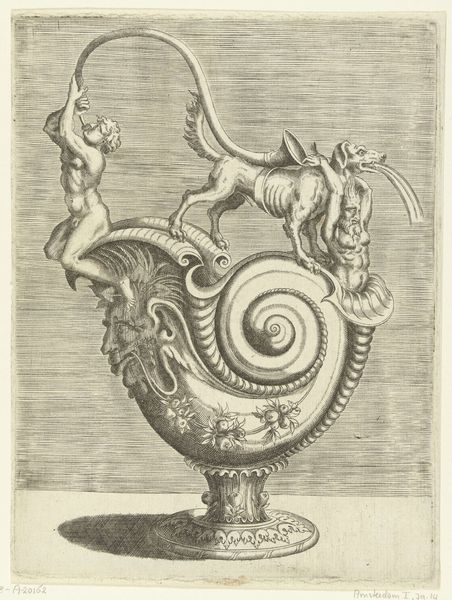
metal, sculpture, engraving
#
metal
#
old engraving style
#
caricature
#
mannerism
#
figuration
#
form
#
11_renaissance
#
sculpture
#
pen-ink sketch
#
history-painting
#
engraving
Dimensions: height 228 mm, width 170 mm
Copyright: Rijks Museum: Open Domain
Editor: So, this intricate engraving from 1548 is called "Vase in the Shape of a Seashell, with an Ear", created by Balthazar van den Bos. It’s incredibly detailed, but there's a fantastical quality to it… almost unsettling. What symbolic meaning do you think van den Bos was trying to convey with such strange imagery? Curator: That "unsettling" feeling, I think, is key to understanding this piece. Consider the spiral form itself. Throughout history, spirals have symbolized growth, evolution, even the cosmos. But twisted, as it is here, almost aggressively so, it speaks to the anxieties of the Renaissance—a time of great upheaval, of new scientific discoveries challenging established religious and social structures. Editor: I see that! The figures climbing on the vase also feel like they're struggling against something. Curator: Exactly! Note how the human figures, these rather strained men, are literally supporting the weight of the vase's "ear," which itself could symbolize hearing, knowledge, or perhaps even gossip. It's Mannerist, of course, pushing towards exaggeration and artifice, yet it prompts us to question what burdens we carry, both literally and figuratively. What do the figures bring to mind for you? Editor: They feel trapped in their roles... as if they’re forced to carry this ornate, perhaps unnecessary, burden. So the whole piece becomes an allegory for the anxieties of the time? Curator: Precisely! The artifice of the form, the stressed figures – these all reflect a society grappling with rapid change. Editor: I hadn't considered how the very shape of the vase and figures spoke to such social anxieties! That adds so much more depth to appreciating it. Curator: And hopefully encourages us to think about what visual symbols mean, and what sort of emotional burden they carry within the history of human culture.
Comments
No comments
Be the first to comment and join the conversation on the ultimate creative platform.
